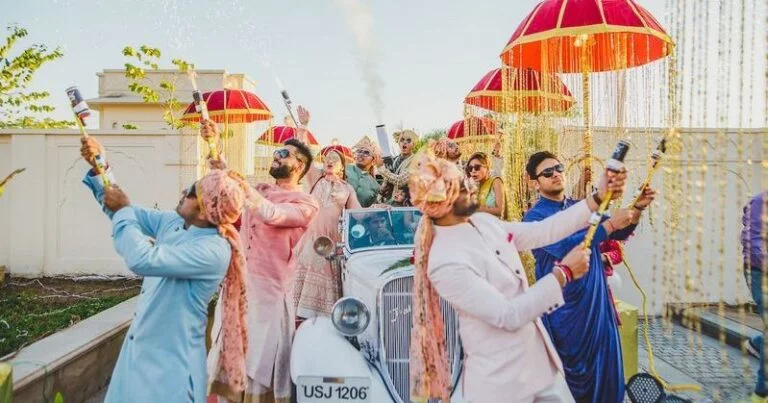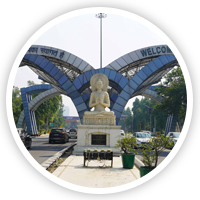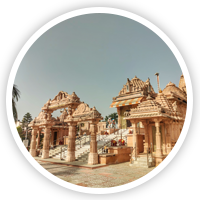
What Happens at a Marwari Wedding?
Marwari weddings are one of the greatest cultures in India. Rich in culture, Marwari weddings are also celebrated in most places in India. It is as rich as any other tradition and culture of India. Find out what really happens at a Marwari wedding and excel in your knowledge about the Marwari culture.

Ganpati Stahapana
A couple of days before the wedding, both the bride and the groom’s family observe this ritual where they open the wedding rituals by putting the Idol of Lord Ganesh on a sacred pedestal in a process known as Ganapati Sthapana.

Pithi Dastoor
Pithi Dastoor refers to a ceremony to the Haldi in other cultures. A paste of turmeric, sandalwood, and sometimes besan is applied to both the bride and groom referred to as Pithi.
Mehfil
It refers to the evening festivities observed during the days preceding the wedding. Men and women get together separately and enjoy themselves by performing the song and dance routines. The bride has ceremonially ushered in the mehfil and is seated on a special seat. All the celebrations are aimed at making her smile.
Mahira Dastoor
During this ritual, the maternal uncle or mama of both the bride and the groom visits their home and brings with him an array of gifts. The gifts include clothes that the bride and groom are to wear during the wedding, jewelry, fruits, and sweets for the whole family.
Janeu
On the eve of the wedding, a sacred thread is presented to the groom by the priest after he has performed a puja and havan. The groom dresses in a saffron dress during this ceremony. By performing this ritual, he understands and accepts the responsibilities of married life, and is initiated from the Brahmacharya Ashram to the Garhasthya Ashram.
Palla Dastoor
A host of the groom’s relatives visit the bride’s house carrying gifts of clothes, jewelry, cosmetics, and accessories. These include her bridal jewelry and outfit. These articles are displayed in a public area of the house for all the relatives and friends of the family to see.

Nikasi
Just before the groom heads out for the wedding venue, an elaborate ritual involving the tying of a headgear known as Sehra is practiced. The Sehra is tied around the groom’s head and is either made of flowers or zari danglers or sometimes even with strings of pearls. This covers the groom’s face. The Sehra is traditionally tied by the groom’s brother-in-law, his sister’s husband. His sister-in-law, his brother’s wife, then applies kajal from her eyes on the side of the groom’s face to ward off evil energy. She also ties a golden thread on the reins of the mare that the groom is supposed to mount.
Toran
The entrance of the wedding venue is elaborately decorated with Toran. On his way in the groom is supposed to hit it with a stick from a Neem Tree. This helps ward off negative energy.

Baraat Dhukavand Aarti
The groom is met with the welcoming party at the entrance. The mother of the bride performs an elaborate Aarti and feeds him with sweets and water. The groom is then welcomed inside the venue.

Granthi Bandhan
The groom’s and the bride’s odhni are connected by tying a knot between them. This signifies the union of two souls.

Panigrahan
After the pledges have been made the father of the bride places the hand of the bride on top of the groom’s. The groom accepts the bride’s hands from her father and the Paanigrahan ritual is completed by tying a sacred thread over the unified hands.

Ashwarohan
The bride puts her foot on a grinding stone. She has to push the stone forward with her feet seven times. This ritual represents the challenges the bride has to face during her married life and this signifies that she will face them with conviction and determination.
Vamang Sthapana
The brother of the bride gives her a handful of puffed rice that the bride and groom together have to offer into the sacred fire. After completion of this ritual, the couple sits with the bride sitting on the left side of the groom indicating her acceptance into her husband’s family.
Aanjhala Bharaai
A bag of money is dropped on the bride’s lap by her father-in-law thus welcoming her into the family. This also implies her duties as a daughter-in-law to control the finances of the household with efficiency. The bride then hands over a part of the money to her sister-in-law, the groom’s sister, and another part to her husband.

Paharavani
After completion of all the wedding rituals, the groom is made to sit on a new cloth and a tika is applied to his forehead. The bride’s family members shower him with gifts like clothes, money, and jewelry. Aka Chola made of silver, which is a special utensil is gifted to the groom’s father. The bride pays her respects to her paternal home by performing puja at its threshold and breaking an earthen Diya on it.
Pagelagni
During this ritual, the bride is introduced to the members of the family and extended family. The elders bless the bride and a puja is performed in her honor.
If you are really into event management and want to try it, the IEM-Institute of Event Management is the Best Event Management which provides a vast study structure in events, practical training, workshops, and internships. Get a free counseling session, which will help you solve your career-related doubts. Also to learn about the full details of Hindu wedding rituals, get enrolled in the Wedding Planning courses provided by IEM.
For more information you can call us at 0522-2396988, 8077626751 / Visit us: 2/156, Vivek Khand 2, Gomti Nagar Lucknow, Uttar Pradesh, India 226010 or Follow us: https://linktr.ee/instituteofeventmanagement
If you are really into event management and want to try it, the IEM-Institute of Event Management is the Best Event Management which provides a vast study structure in events, practical training, workshops, and internships. Get a free counseling session, which will help you solve your career-related doubts. Also to learn about the full details of Hindu wedding rituals, get enrolled in the Wedding Planning courses provided by IEM.
For more information you can call us at 0522-2396988, 8077626751 / Visit us: 2/156, Vivek Khand 2, Gomti Nagar Lucknow, Uttar Pradesh, India 226010 or Follow us: https://linktr.ee/instituteofeventmanagement








